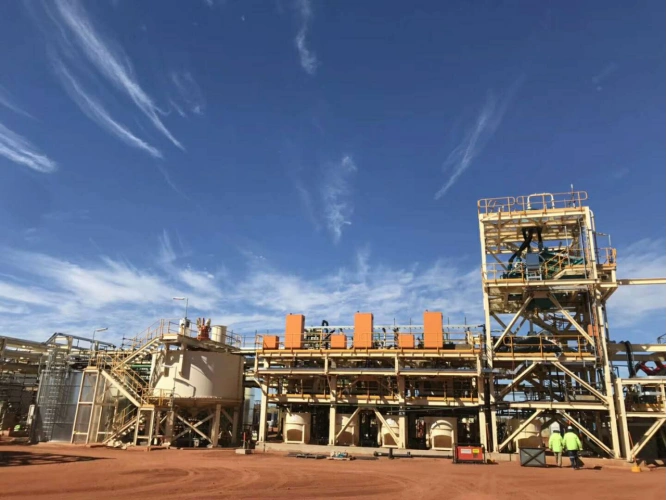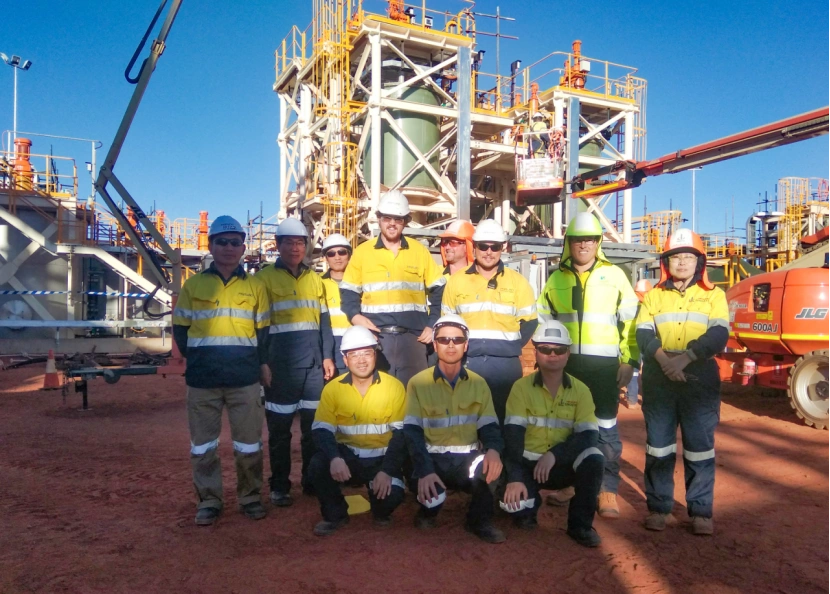The need for rare earth elements (REEs) is growing fast. These materials are key for electric cars, wind turbines, phones, and defense equipment. Australia’s A$1.2 billion Critical Minerals Fund, worth about $777 million USD , started in 2025 to boost its role in this important market. This article looks at how the fund affects mining. It focuses on the rising need for special equipment and machines. It also explores how Jiangsu New Hongda Group Co., Ltd. (NHD) offers smart solutions for processing rare earths. With its skills, NHD is ready to help Australia meet its goals while tackling green and practical challenges.
Australia’s Bold Plan for Rare Earths
Australia wants to grab a bigger piece of the global REE market. This move supports economic growth and strengthens its position in world politics amid supply chain worries.
A$1.2 Billion Fund: Boosting Rare Earth Projects
The Australian government launched the A$1.2 billion Critical Minerals Fund. It offers low-cost loans, grants, and rewards to speed up rare earth projects. The Australian Department of Industry, Science and Resources (2025) says the fund aims to cut reliance on China, which controls about 80% of processed REEs (US Geological Survey, 2025). With U.S. tariffs and China’s export limits, Australia is teaming up with allies like the United States to secure supply chains (Reuters, October 2025). Projects in places like Western Australia’s Cue region are prioritized. They can grow in a green way.
Global Trends: Spreading Out Supply Chains
The International Energy Agency (IEA, 2024) predicts REE demand will jump four times by 2040. This is due to the shift to clean energy. Countries like Canada, with its SRC facility in Saskatchewan, and the U.S., with the Mountain Pass mine, are boosting output. Yet, Australia’s huge reserves—second only to China—make it stand out. The fund pushes for green mining. This aligns with Australia’s Environmental Protection and Biodiversity Conservation Act (1999). The act demands strict waste control and nature protection. This creates a need for advanced equipment to meet rules and work well.
Changes in the Industry Driving Equipment Needs
The fund is transforming Australia’s rare earth sector. It opens doors for makers of equipment that can handle tough processing tasks.
Challenges in Processing Rare Earths
Extracting rare earths is hard. Ores are low-quality, and elements are chemically similar, needing precise separation. In Australia, sites like Mount Weld deal with high water use and waste management. The fund’s support for new projects increases the need for equipment. These must handle harsh slurries, cut environmental harm, and process thousands of tons yearly.
Need for Green Technologies
Australia’s 2025 Critical Minerals Strategy focuses on green mining. It calls for low-waste equipment and fair labor practices. Equipment must use less water and manage waste well. It also needs to follow laws like the Work Health and Safety Act (2011). Equipment like dry stacking for waste and energy-saving methods are key. This creates chances for companies with new solutions.
NHD’s Equipment for Rare Earth Processing
NHD leads in chemical and mining equipment. It offers custom solutions for the challenges of rare earth processing. Its long experience makes it a strong player.
High-Efficiency Filter Series for Solid-Liquid Separation
NHD’s Filter Series includes rotary vacuum filters. These have capacities up to 320 square meters, about half a soccer field. They excel at separating solids from liquids in wet REE processing. Used in phosphoric acid projects, these filters ensure high purity by removing tiny particles from slurries. This is vital for Australia’s laterite ores. Their design cuts waste, meeting Australia’s green standards.
Strong Agitators for Tough Conditions
NHD’s Agitator & Thickener Series uses mechanical and magnetic seals. These handle harsh, sticky slurries in nickel and REE processing. For example, in the MCC Ruimu nickel project, these agitators prevent leaks. This lowers repair costs and boosts safety in tough settings. Their strength suits Australia’s remote mining sites, where reliability matters.
Large Thickeners for Saving Resources
NHD’s thickeners, with diameters up to 28 meters, support big operations. They are used in alumina projects handling 2 million tons yearly. These systems thicken slurries, cutting water use by up to 30% compared to old methods (NHD reports, 2024). They enable dry stacking of waste, reducing environmental harm. This supports Australia’s green goals.
NHD customizes equipment to fit various project needs, from lab tests to full-scale setups.
Why NHD Excels
NHD’s skills and global experience make it a top choice for Australia’s rare earth goals. Still, it faces rivals like Outotec and FLSmidth.
Proven Success in Critical Minerals
Started in 1992, NHD combines design, production, and project services. It serves industries like phosphate chemicals and non-ferrous smelting in 52 countries. Its work on the MCC Ruimu nickel project shows it can deliver solid solutions for complex mineral processing, including REEs.
Innovation and Quality Certifications
NHD holds over 200 patents. These include equipment for fast acid extraction and waste heat recovery. These boost energy efficiency by up to 15% (NHD patent filings, 2023). Certifications like ISO9001:2015 and National High-tech Enterprise status show its focus on quality. These help meet Australia’s rules for low-emission processing.
Global Skills with Local Fit
NHD’s work in 52 countries, including Australia, allows it to tailor solutions. It uses thorough testing and works closely with clients. Its process—from lab trials to on-site help—ensures equipment fit local needs, like Australia’s dry climate and strict safety rules.
Conclusion
Australia’s A$1.2 billion Critical Minerals Fund is a strong move to diversify global REE supply chains. It also promotes green innovation. As projects grow in places like Western Australia, the need for eco-friendly equipment will rise. NHD’s Filter Series, Agitator & Thickener Series, and custom solutions make it a key partner. Yet, competition is tough. By providing efficient, rule-following equipment, NHD can help Australia build a secure, green rare earth industry.
FAQs
Q1: How does the fund affect equipment makers?
A: The fund increases demand for special equipment like filters and thickeners. These support efficient, green REE processing. Companies like NHD, Outotec, and FLSmidth gain from more project funding.
Q2: What are the main hurdles for Australian REE projects?
A: Projects face low-quality ores and high water use. Strict rules under the Environmental Protection Act add challenges. Advanced equipment must tackle these while keeping costs low.
Q3: How does Australia’s fund fit with global REE plans?
A: The fund works with efforts by countries like Canada and the U.S. It helps reduce reliance on China. It also meets rising demand, as predicted by the IEA.




